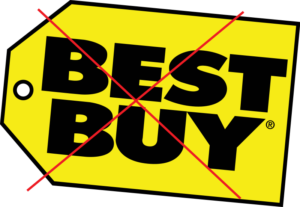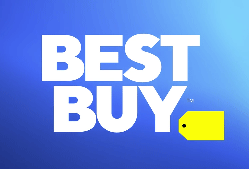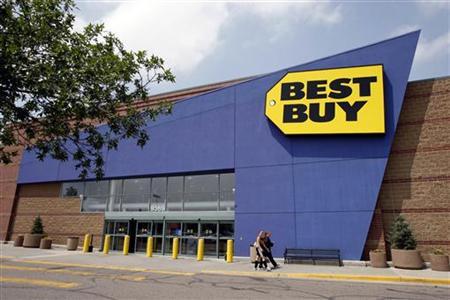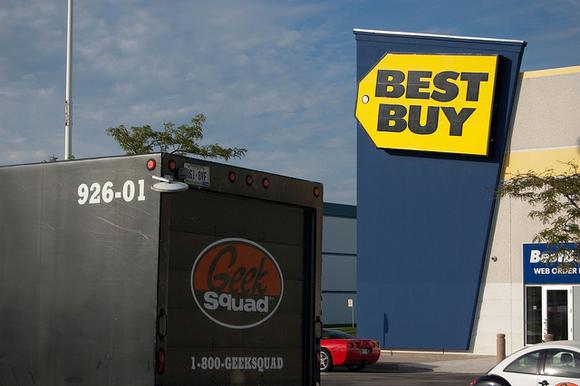 Best Buy has launched a corporate rebranding that is both sweeping in style and represents a shocking reversal of course, undoing much of its original mission that was created when founder Dick Schulze, President Brad Anderson and crew launched an entirely new store concept known as “Concept II.” Concept II was a reinvention of their formerly more traditional superstore design to a new warehouse style discount store designed to deliver the “Best Buy” on all things tech. This new branding change is to such a significant degree that even Advertising Age Magazine (AdAge) devoted significant space to an analysis of it.
Best Buy has launched a corporate rebranding that is both sweeping in style and represents a shocking reversal of course, undoing much of its original mission that was created when founder Dick Schulze, President Brad Anderson and crew launched an entirely new store concept known as “Concept II.” Concept II was a reinvention of their formerly more traditional superstore design to a new warehouse style discount store designed to deliver the “Best Buy” on all things tech. This new branding change is to such a significant degree that even Advertising Age Magazine (AdAge) devoted significant space to an analysis of it.
See more on this surprising reversal of the genesis of Best Buy’s founding concept…
Best Buy, for many decades has been using a large yellow graphic representing a price tag with bold black letters decrying “Best Buy.” It was designed specifically for the purpose of suggesting that this store offers very low pricing on technology – the best buy in tech. And although their branding concept to support that image has changed over the years, essentially, the company was all about the most tech at the best price.
About a year ago, according to a report by AdAge, the company began working on a new brand concept. Most likely this was due to the fact that the company continued to get a lot of competition from the 800-pound gorilla of retailing – Amazon.com. Best Buy’s original concept of being the place to get the best buy on technology was being usurped daily by Amazon.com, which was usually offering a better buy than Best Buy.
It’s No Longer All About Price
So Best Buy’s new logo demoted the price tag to a small graphic that is positioned next to and at the bottom of the bold Best Buy name. This is a not too subtle suggestion that they are no longer JUST about pricing. This alone would be a huge change…but there’s more.
 To promote this new Best Buy, the company is turning to what it believes may be its secret weapon to defeat Amazon.com – its blue shirts. Yes, now employees are front and center in their advertisements, suggesting that you now shop at Best Buy because these young and attractive employees in blue shirts…an army of them…are there to provide personalized service.
To promote this new Best Buy, the company is turning to what it believes may be its secret weapon to defeat Amazon.com – its blue shirts. Yes, now employees are front and center in their advertisements, suggesting that you now shop at Best Buy because these young and attractive employees in blue shirts…an army of them…are there to provide personalized service.
Ouch! Amazon.com can’t do that!
Executing a Complete 180°
The company has overhauled their logo…their website…their advertising…and their thinking about how to position themselves against the competition. New television ads will begin running later this week. It’s an all new Best Buy.
But it’s a Best Buy that has done a complete 180° turn from the branding concept that got them here. Who am I to say that? I’m an expert on Best Buy…or at least on the old Best Buy.
FULL DISCLOSURE: I consider myself a bit of an expert on Best Buy’s original Concept II warehouse stores, as the launch of this concept back in the early 1990s put the company I represented (Onkyo USA) on a collision course with Best Buy – one of our top dealers at the time. In order to help put their new branding change in context, let me first take you back to the early 1990s.
Going Way Back to the 1990s to Meet Concept II
At that time, the Best Buy store layout consisted of a fairly traditional superstore design, not unlike one of their major competitors at the time, Circuit City. Throughout the 1980s, the Best Buy team began experimenting with different store concepts and designs. While this tended to give them a fragmented presence, as each store looked different from the others, the company was seeking a design for the future.
What the team ultimately settled on was something they called Concept II. This Concept II format was unlike any they had tried before. First, they adopted a warehouse affect, much like a Price Club or Sam’s Club. The design was large, well lit, had plenty of signage and rack shelving that was designed to be self-serve to the consumer – even offering grocery store-style shopping carts included.
Anyone Seeking the Best Buy in Tech Would Have to Go to Best Buy
The goal was to reduce operating overhead, lowering their costs so much that the company could sell technology products for much less money. Their goal was to have a lower operating cost than any other competitor so that nobody could legitimately beat their prices. If consumers were looking for the best buy in technology, they would HAVE to go to Best Buy to get it.
The two greatest cost factors for large discount technology retailers in those days were advertising and personnel. So this became the initial goal of the company – drop these costs to an absolute minimum. So Best Buy adopted an “Every Day Low Price” concept to break the cycle of having to print weekly circulars that were costly to create, print, and distribute. And they then dropped their floor pricing to below market levels so shoppers could instantly see – and buy – technology at the cheapest price…rather than wait for a flyer to show that week’s specials.

This Decision Put Best Buy and Onkyo on a Collision Course
But the decision that put Best Buy on a collision course with Onkyo, was their decision to eliminate the salesperson’s position. Previously, lost most component hi-fi retailers in the day, Best Buy compensated their sales staff with commissions on the items they sold. In Concept II, there was no need for a salesperson…customers would push their shopping carts around and pick the box for the item them desired off the warehouse rack and put it into their cart on their own.
For Onkyo, this was an instant and obvious problem. Onkyo products were better built and had unique technologies and features…and consequently cost more as a result. For their components to sell well, Onkyo believed they needed a knowledgable, motivated, and capable retail salesperson who could show, explain, and demonstrate the Onkyo advantages. To Onkyo, the model that had been proven to work, was one that included a well-trained, commissioned salesperson who, because of the way they were paid, would be willing to invest the added time necessary to show and sell a step-up product like Onkyo in order to secure the sale.
Best Buy Had Skeletal Staff, No Commissions, and No Salespeople
But Best Buy eliminated the salesperson, employing only skeletal staffing of shelf restockers. Consumers who needed assistance to understand the relative merits of multiple models were directed to a computer where they could research such matters for themselves.
Those of you who have been in this industry that long, may recall that the issues between Onkyo and Best Buy ultimately boiled over, resulting in a major lawsuit that after a few years of back and forth battling, was settled by the parties.
Actually, the Best Buy Model has Been Evolving for Years
In truth, Best Buy’s strategy has been evolving for years. Perhaps the best example of that was their decision to acquire the Geek Squad in order to be able to offer customers repair and installation services.

But clearly, Best Buy’s new branding initiative seeks a new path, where their staff becomes not just a feature, but rather a central source of competitive advantage over the more impersonal online sales outlets like Amazon.com.
“It’s really about building more aggressively toward serving customers and helping change lives with technology,” says Whit Alexander, Best Buy’s new chief marketing officer told AdAge. “We needed a way to tell the story a little differently through how we interact with customers.”
Blue Shirts to Customers: ‘Let’s Talk About What’s Possible’
Best Buy’s new concept – not in stores but in brand – is embodied in a “rallying cry,” according to Alexander, of “Let’s talk about what’s possible.” A concept that AdAge says “positions Best Buy as an inspiring friend that can help consumers achieve their goals.”
Concept II sought to ELIMINATE employees. Now, Best Buy seeks to EMPHASIZE employees.
To me, that sounds like a value-added concept!
See the new logo and website for Best Buy at: www.bestbuy.com.





Leave a Reply